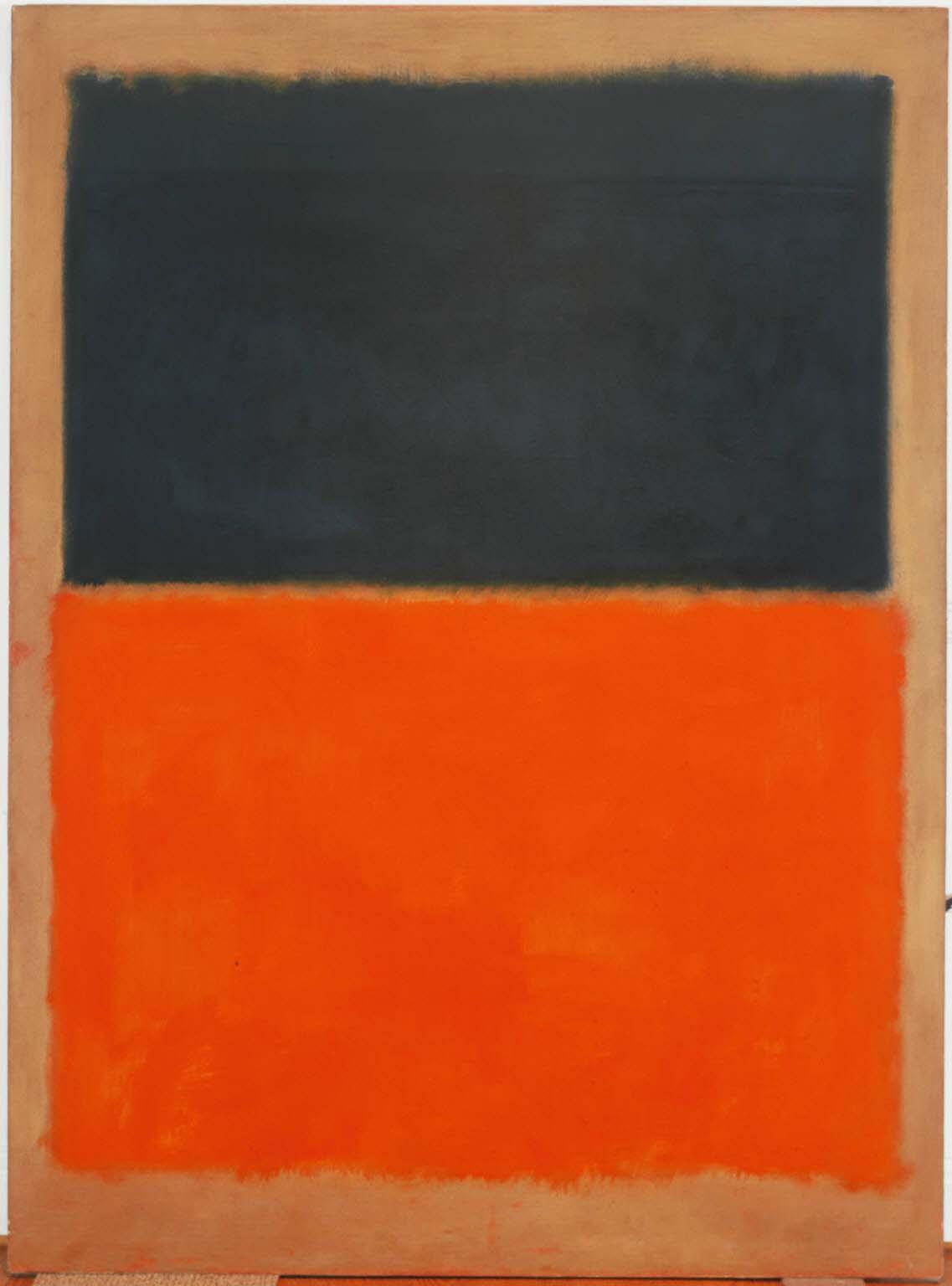Green and Tangerine on Red
Mark Rothko ( 1956 )

Green and Tangerine on Red was executed in the mid-1950s, when Rothko painted scores of large canvases. All have a similar format, but vary widely in mood depending upon their color and internal proportions. Rothko resisted being labeled a “Color Field painter,” insisting that his art concerned the distillation of human experience, both tragic and ecstatic, to its purest form. His paintings, heavy with implied content and emotional impact, ventured beyond abstract representation, to embody the drama of humanity.
In Rothko’s compositions, his colors dominate the field of vision. They are both bold and calm, heightening a mood or expression. The dominance of each shape depends on their color, which Rothko blended and layered to create variations in luminosity and surface texture. He frequently applied paint with rags, rubbing wet colors together, so that few gestures were visible; at other times he painted with slightly built-up brushstrokes for textural variation. In many cases translucent underlayers of color are visible, evoking a quality of inner light.
Green and Tangerine on Red is composed of two massive rectangles, one dark and one light. Marjorie Phillips recalled Rothko’s assertion that “the striking tangerine tone of the lower section of [Green and Tangerine on Red] could symbolize the normal, happier side of living; and in proportion the dark, blue-green rectangular measure above it could stand for the black clouds or worries that always hang over us.” This statement expresses the opposing emotional states that Rothko’s works can evoke. The vibrant orange, instantly catches the viewer’s attention, who then looks upward to the sedate patch of green. Rothko managed to both excite and calm with this painting, stimulating and relieving the senses almost simultaneously.